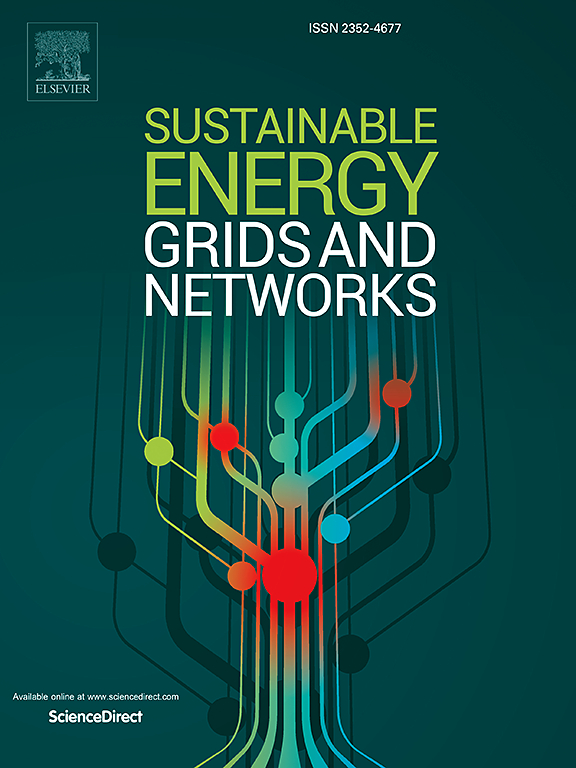Symbiotic fitness assessment for the "Resource-Project-Demand" chain of integrated energy system in industrial park
IF 4.8
2区 工程技术
Q2 ENERGY & FUELS
引用次数: 0
Abstract
The emergence of Integrated Energy Systems (IES) offers a promising solution for low-carbon transformation and enhancing energy efficiency in industrial park energy systems. Grounded in symbiosis theory, this study evaluates the symbiotic fitness status of three functional components ("resource-project-demand" chain) within IES in industrial parks (IES-IP). We establish a symbiotic fitness evaluation framework centered on key symbiotic parameters and develop a corresponding model to analyze five case studies. Comparative analysis of cumulative absolute relative deviations reveals that the weighting method incorporating moment estimation theory demonstrates superior performance among combined weighting approaches. The most influential criteria are found to be renewable energy resource potential (resource side), effective clean energy utilization rate (project side), and industrial-commercial electricity price peak-valley differentials (demand side). All five cases exhibit symbiotic fitness degrees surpassing the baseline threshold (point symbiosis, extremely unfit), though remaining below the optimal level (integrated symbiosis, perfectly fit). The obstacle degree model combined with symbiotic fitness coefficient analysis provides actionable insights for system optimization.
工业园区综合能源系统“资源-项目-需求”链的共生适应度评价
综合能源系统(IES)的出现为工业园区能源系统的低碳转型和提高能源效率提供了一个有前景的解决方案。本研究以共生理论为基础,评估了工业园区工业园区内“资源-项目-需求”链三个功能组件的共生适合度状况。本文建立了以关键共生参数为中心的共生适应度评价框架,并建立了相应的模型,对五个案例进行了分析。对累积绝对相对偏差的比较分析表明,结合矩估计理论的加权方法在组合加权方法中表现出较好的性能。影响最大的标准是可再生能源资源潜力(资源侧)、清洁能源有效利用率(项目侧)和工商业电价峰谷差(需求侧)。所有五个案例的共生适应度都超过了基线阈值(点共生,极度不适合),但仍低于最佳水平(综合共生,完全适合)。结合共生适应度系数分析的障碍度模型为系统优化提供了可操作的见解。
本文章由计算机程序翻译,如有差异,请以英文原文为准。
求助全文
约1分钟内获得全文
求助全文
来源期刊

Sustainable Energy Grids & Networks
Energy-Energy Engineering and Power Technology
CiteScore
7.90
自引率
13.00%
发文量
206
审稿时长
49 days
期刊介绍:
Sustainable Energy, Grids and Networks (SEGAN)is an international peer-reviewed publication for theoretical and applied research dealing with energy, information grids and power networks, including smart grids from super to micro grid scales. SEGAN welcomes papers describing fundamental advances in mathematical, statistical or computational methods with application to power and energy systems, as well as papers on applications, computation and modeling in the areas of electrical and energy systems with coupled information and communication technologies.
 求助内容:
求助内容: 应助结果提醒方式:
应助结果提醒方式:


